#fun dissonance between reality and my place in it and constantly feeling like this is some annoying dream I'll wake up from eventually
Explore tagged Tumblr posts
Text
Morality Focused Frameworks of Discussion as Acts of Control (Part 2)
Okay, so initially I decided not to make a part two instead to follow up with some conversations more directly, but there are some further thoughts I have that I want to get out that have a more general tone.
I want to talk about fandom discussions as a whole more, because I think we need to address something in terms I don’t think I’ve seen acknowledged much. Specifically, I want to talk about the How of “discourse,” and not the What.
Disrespect And Boundary Violation As The Socially Expected Norm:
I think that all too often, we focus on what a specific conversation is about at the expense of talking about how we are interacting with each other - and this is in turn often at the expense of personal boundaries, benefit of the doubt, and ethical, empathetic conduct.
I think this is a huge problem, because the combination of those elements is basically a recipe for harm, particularly for unaddressed and repeated patterns of harm that is often essentially consequence free, or even outright celebrated.
At the very least, these kinds of behaviors have been normalized to the point that questioning them is sometimes equated with tone policing or “crying victim.”
And yes, that is a problem, even if you think there is a “moral issue” with how someone engages with a piece of media.
Furthermore, it’s worth talking about the fact that social media today is structured to allow interactions with strangers that can and do often happen without your consent. The disregarding of social interaction consent has actually become extremely normalized.
Now, that’s a complex issue, I’m not arguing that trying to talk with strangers is an automatic heinous consent violation. But it is worth noting that the ability to maintain control over one’s own boundaries is much more limited in these spaces. Blocking is a site mechanic, it is not really a socially ingrained method of boundary establishment that everyone respects without being forced to do so. And even then, people will absolutely copy and paste your words for their own use, entirely without even consulting you or allowing you to have agency in the situation. This allows them to maintain their own framework around you and your words and interactions, with your consent being a non-factor. Again, disrespect is completely normalized.
With Disrespect As A Baseline For Engagement, Moralized Frameworks Establish A Struggle For Conversational Power:
When you come into a conversation without respect for your conversational partner, you are more likely to assume that their disagreement with your principles is an indicator of their inferiority, intellectually or ethically.
When you are seeking the means to dismiss the thoughts and feelings of someone who disagrees with you, you are more likely not to come into a conversation willing to be open and understanding to alternative perspectives. The assumption that another person’s perspectives automatically aren’t worthy of your time creates a mental feedback loop where it’s easy to reinforce binary rules around what thoughts and feelings are acceptable.
Furthermore, the intent to maintain one’s own perspective as an impermeable truth makes a person predisposed to rejecting complexity. But the reality is that people are inherently complex, and their reasons for what they enjoy or how they enjoy something will not always match the political strawman image you might have in your head.
All of this establishes a conversational environment where the baseline of the discussion relies upon a kind of moral power struggle. Instead of trying to understand and converse from a place of full understanding, we are trying to make the other person either adopt our viewpoint as the only acceptable framework, or make the other person feel ashamed for essentially disobeying the rules we value.
Using my first post as an example, people who discover that I like Hellraiser and ship a couple that includes Pinhead and a trauma victim might make some very unsavory assumptions about what exactly it is that I’m doing. Someone who assumes I have no moral character based upon my interests is unlikely to ask me about the complex nuances of how and why I engage with the material that I do. They would not understand that I’m an abuse victim engaging in art that deals with abuse in a way that I find introspective and healing and meaningful.
However, lets say that I actually told them so.
Marginalized and Traumatized People As “Exceptions To The Rule”:
A few people have spoken recently about the ways in which fandom discourse is essentially starting to pressure trauma victims to publicly disclose their trauma as a means of establishing the right to be respected in one’s own perspectives, and I think that point is extremely relevant to this conversation.
Furthermore, this inevitably forces people who are marginalized to openly disclose and discuss (sometimes to the point of it being grueling and stressful) the ways in which they are marginalized and how that interacts with the media they enjoy and the ways in which they engage.
It’s worth noting that these conversations are often about fictional interests, and how insidious it is that this kind of thing is happening in a space where people should be free to have safe, uncomplicated fun if they wish to.
Because we have established disrespect, boundary crossing, moralization, and power games as baselines for conversational engagement, we’ve essentially created a space where traumatized people feel this intense pressure to dredge up painful experiences as a means of establishing the right to their own power and boundaries in conversations.
Interestingly, when these conversations involve two traumatized people or two marginalized people on the opposite sides of an argument, this can sometimes result in a “more traumatized than thou” battle, where each party tries to establish which abuse experience or which axis of marginalization has more value in the establishment of conversational power, ultimately resulting in both parties getting hurt and/or silenced in some particular way.
Hypocrisy and Self-Respect:
The amount of cognitive dissonance and hypocrisy I’ve seen in these spaces is kind of astronomical. It’s hard to engage in a single conversation on this site without somebody pretending they are somehow superior in their engagement to others. Consider this the “Twilight Sucks” phenomenon. We will pick out groups we consider the lowest denominator and use them as leverage in conversations. “I’m a Tru Blood fangirl and I think X and Y, but thank GOD I’m not like those Twilight fangirls who think X and Y! *eyeroll*” People who engage in exactly the things they condemn don’t seem to see the parallels in their own interests and behaviors. They will even bring these pet bully topics into conversations that have nothing to do with them in order to establish personal respectability value.
By always making this moral framework about the What, aka the media itself, and not the How, aka the myriad unique and individual ways in which people engage with that material, we establish an environment where not only is nuance completely lost, but entire fan groups are dehumanized and derided conversational leverage.
Furthermore, people seem to use this dynamic as a way of establishing their own self-respect. If they see any parallels between themselves and the dreaded X fangirls, those considerations must be dismissed and rationalized away in order to maintain a respectable self-image.
And continuing with Twilight as our example: there are major things to criticize about Twilight. But very often, those things would be secondary in the conversation to the condemnation and bullying of the teen girls who enjoyed it, or those things worthy of criticism would be used as justifications of the cruelty, disrespect, and total dismissal of those fangirls.
This is a problem, because it should be obvious that when media criticism revolves around a social power game, then the social power game becomes the emotional focus of all discussion, and no real ground is actually broken - at least not without casualties. A winner implies that there is also a loser.
The Re-establishment Of The Social Power Status-Quo:
All of this works to establish a kind of status-quo of acceptability, where instead of doing the hard work of uplifting each other’s complex, potentially very different or even opposing experiences and perspectives as valid aspects of fandom engagement and a reality of the human condition, we are constantly fighting for power over each other, more specifically for the right to be respected.
In other words, the right to be heard and allowed to exist and enjoy ourselves without harm or alienation.
I don’t feel like this toxicity necessarily even comes from a place of wanting to oppress others, although for many that seems very much part of it. More often, I think this comes from the desperation to be respected and heard that comes from the experience of marginalization. And sometimes, in our urge to do so, we can throw each other under the bus to get there.
Sometimes we can be cruel and disrespectful out of frustration, or paint people with a too-wide brush because we’re just done with how certain people have been acting, or because we’re expecting the worst out of people and unwilling to give the benefit of the doubt anymore. Sometimes I think we fall back on childish mean-girl tactics of engagement just because it makes us feel powerful when we’ve often felt powerless.
And to be honest, I completely understand. I think that in my time online, I myself have engaged in ways that I regret. I fought petty battles with the wrong people, or failed to offer the benefit of the doubt, because it felt like a righteous battle. It felt like I was fighting for justice. There were times when I failed to try and understand an “argumentative opponent.”
At the end of the day however, I believe that this form of “critical engagement” is not only highly uncritical of the self, it is an extraordinarily weak and destructive way of trying to create progress in fandom spaces that ultimately harms more people than it uplifts. It encourages abuse, gaslighting, and disingenuous, dishonest ways of social engagement. It encourages hiding, and lying, and toxic tactics. It encourages misreadings, willful misunderstandings, and silencing. And I think that identifying and naming power games when we see them might go a long way towards empowering people to have conversations of genuine substance, where respect is established and valued.
66 notes
·
View notes
Text
Okay, it’s been a day and now I have mostly-coherent thoughts on Let’s Get Dangerous, so I am writing them out. Spoilers under the cut!
There were things I like and things I didn’t like, honestly. I’m gonna start with the negatives.
...I’m just gonna say it: I don’t love New Gos as much as Gos Classic. Which, to be fair, I kinda expected, because that’s a really high bar!! New Gos is a good kid, just... not quite what I expected. She’s clearly older, for one thing, and more... toned-down?
In general, I would say she’s a little less baby than Gos Classic, and a little more YA Punk Heroine. Which is valid. It just doesn’t make for an instant bond, for me.
I am... also genuinely disappointed by the final offer of “wanna be my crimefighting partner?” I mean, it makes perfect sense for where they’re at, as opposed to their original counterparts--not only are they planning to find her Grampa, but we already got the “You’re not my family!!” and I guarantee you Reboot Drake has internalized that one. He’s trying to look out for her without overstepping! He’s doing his best!
...BUT. But having them end as “partners” and not actual family just feels wrong. (And there’s also added dissonance because I can’t help thinking how much Drake Classic would blow his top at the idea of inviting Gosalyn to fight crime??? Are you crazy??? She’s a KID!!!!)
(...That said: if Reboot Gosalyn is anyone other than Quiverwing Quack next time we see her, I’m suing. But she will be QQ--she’s already been shown with a crossbow and everything! Nice work there, to be fair.)
Related: are we allergic to the word “dad”?? I know it made more sense to say “family” some of the time, since Gos has probably never had parents in her life, but... after a while it felt like there was some Writer Mandate that that was the only usable word. Or maybe that’s a DuckTales thing in general, actually? Not sure. I just feel like “You’re not my dad!” would be a slightly more likely line in context (or “You’re not my Grampa!”) and have packed more of a punch.
Those...were really my only negatives, I think.
On to the positives!
I love Reboot Drake. So much. He’s earnest and endearing and still just ridiculous enough to still be Darkwing... and his Dad Energy was off the charts here, which is the TRUE mark of a Drake Mallard.
Also his voice actor does such a good Darkwing. You can tell he’s put serious study into this.
Okay. OKAY. Taurus Bulba...
TAURUS BULBA IS LANCE. LANCE FROM TANGLED.
I had to pause and then IMMEDIATELY text my sister when I found that out. Like... really??? Congrats, Disney! I wouldnt have said it was possible, but you created a Taurus Bulba I’m unable to hate!!
Also... Dewey. If ever you’ve used your theater kid powers for good, do it now. ...Get us a Musical Episode with Taurus Bulba in it. I need him to have a Villain Song.
Drake being literally the only person ever to NOT know Fenton is Gizmoduck is honestly an EXCELLENT twist on their dynamic. And given their reboot personalities, of course they get along outside of the suit--I mean, they should, but the identity thing means we still get some fun secret-identity conflicts.
No one told me there were this many The Good Place actors here. First Steelbeak turns out to be Derek, then the buzzard is Shawn (EXACTLY the same role too, honestly) and the computer/Ganrda Dee is Tahani?? I JUST watched S4 of TGP, guys. You have to stop hitting me with actors I actually recognize! It’s weird!!
(And then I have to consider things like “Abed and the Tenth Doctor and Lance are all in the same scene. Oh, there’s Shawn from the Bad Place. Oh look--” CONSTANTLY.)
Okay, I’ll admit it: Dewey seeing himself in Gos’s need to find her grampa and deciding to "be her Webby” was really sweet. Good kid.
I enjoyed the name-dropping of DWD villains and actual episode names (although... “Just Us Justice Duck” was underrated? By whom?? It’s a CLASSIC!)
Thing I REALLY appreciate: So 2017 DuckTales is, like, five notches less Cartoony than Darkwing Duck. HOWEVER, in both DW eps so far Drake’s personal physics have seemed to be two or three notches more cartoony than everyone else’s (see: the piano bit in the first ep, and the filing cabinet in this one). This delights me.
They gave us two hummed lines of “Little Girl Blue”and it was still enough to make me go “yoU CAN’T JUST DO THAT”
Miscellany:
The multiverse stuff is has Big Implications and ties in really well to established Darkwing canon, meaning they could really easily meet their original counterparts. It also seems to echo a plot from the comics, if I’m remembering rightly, where a different member of the Family Darkwing got lost between dimensions.
However... this is meta?? Because it means their in-universe Darkwing show is apparently also another reality. Which is WEIRD, because... that one (at least to the point covered in the meta-show) didn’t have a Gosalyn. Or a Launchpad. How can you have a real Darkwing without them?? What is that reality like?? Is the meta-show an accurate representation?? I have QUESTIONS
Also I really really want Gos Classic’s adult self to fall through a portal and hang out with this gang for a while. And her dad too. (Drake Classic would yell at his younger self for letting Gos fight crime, but then he would adopt him. The Dad Instincts are strong... and Reboot Drake could use a non-crazy older Darkwing in his corner!)
#i feel like i had more to say#but this is already very long#so let's go with this#it is late and i should be in bed#but The Meta#darkwing duck#let's get dangerous#let's get dangerous spoilers#ducktales
14 notes
·
View notes
Text
FULLMETAL ALCHEMIST SPECIAL INTERVIEW: ROMI PARK x RYOSUKE YAMADA - When the 2 Eds Meet!!
Fullmetal Alchemist, the movie that has been attracting attention and is soon to be the opening screening at the Tokyo International Film Festival. Ryosuke Yamada and Romi Park, together as two fans of the manga who have played the protagonist Ed in the live action and anime versions respectively, discuss their thoughts on the passionate love for FMA and its adaptation to live action.
"I cried like a baby at the scene with Ed, Al, and Winry" (Park)
It's almost time for the opening of the live action movie of Fullmetal Alchemist, an almost legendary dark fantasy manga that has sold a total of 70 million copies as a series worldwide and has had 2 anime adaptations. Ryosuke Yamada, who with an extraordinary resolve took on filming as the lead role [of the movie], is actually close friends with the long time voice of anime version Ed, Romi Park. We started by asking the two fans of the manga to tell us the story of how they met.
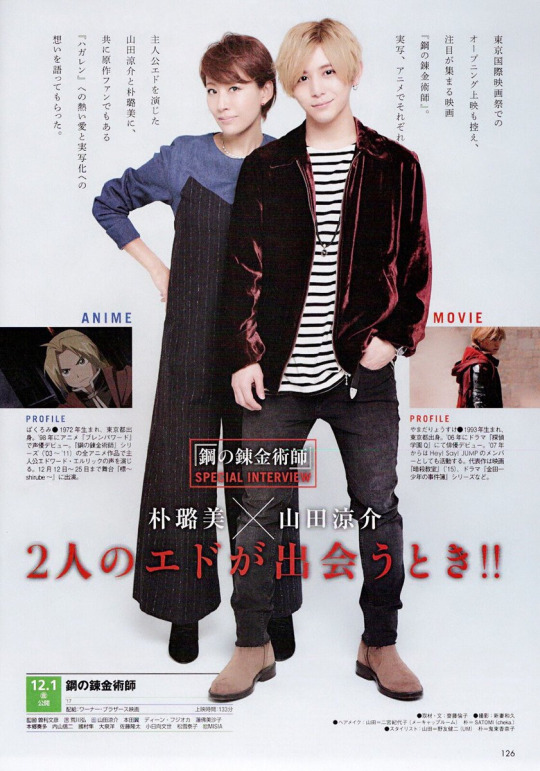
Y: The first time I met her was over lunch. Because Romi-chan is the Ed that I've always seen, I kept fidgeting unsure of what to do... Her personality also resembles Ed... how should I put it, she's cool. She told me her honest feelings about the live action adaptation and, after watching the movie very attentively, she also gave me her exact impressions on it so I was very happy. We talked about a lot of things like the hardships that only someone playing Ed would understand and It was a wonderful time.
P: The first impression I had of Yamada-kun was "what beautiful eyes this kid has!" Straight ahead, the inside of those transparent eyes were full to the brim with a fighting spirit intent on carrying Fullmetal Alchemist on his shoulders to the very best of his ability... As someone who played the same Ed, I also started overflowing with more happiness than I thought I would.
At the time [of the anime] Park, the senpai Ed, also felt the pressure of playing the protagonist of this worldwide popular work.
P: The work Fullmetal Alchemist itself is something quite like a black hole and this monster created by (Hiromu) Arakawa Sensei takes everything away from you. That's why, in order to carry [FMA], it's important to be able to take an enormous amount of heat. It's just like, "Your body, mind, soul, everything, hand it over!" because it's constantly doing a lot of tampering with your interior. Every week, every week I submitted myself to this monster with all my power, would be wrapped up in it, and would have everything taken away. It was a work that needed that much infinite power.
Y: I wanted to give importance into not thinking about it deeply. However, because the human being standing on-set is me, I did what I could on top of obviously taking on Ed's appearance, rewatching the anime, and also reading the manga over again many times. I had to stand on-set, not as the manga's Ed nor the anime's Ed, but as "Ryosuke Yamada's Ed" so as it's expected, some originality also became necessary there. When I take on filming, I stand on top of many things that I've studied so I don't really think about it too deeply and just face all of the things that happen on-set earnestly, giving importance to reacting.
"In my 24 years of life, this is the work that I've poured everything into." (Yamada)
It is also said that Yamada personally went all out and took on dangerous action scenes. Was there something you were carefully about during filming?
Y: Just "don't get injured" I guess. That's what I'd always think while doing [the action scenes]. That's why in the beginning, the scene where I jump off from a roof to leap onto Cornello (Kenjirou Ishimaru) was filmed on the day we finished shooting. They built a roof set and dug a hole about 5 meters deep in the ground that I was supposed to run and jump into. But that scene was something that I had never done until then so it was fun. What was the most important [scene] during shooting was the fight with (CG-created) Al. There, I had to punch an opponent that wasn't there and Al's height is 2 m 20 cm so...
P: That was amazing!
Y: My punches don't reach him you know. It was also my first time having to punch with my left hand instead of my right. If it was with my right then I could have very good form, but I couldn't do that with my left so I earnestly started shadow boxing at home while researching it. That scene was very tough, but after watching the completed scene I was extremely satisfied.
P: In the movie, this was the scene that I also got caught up in the most, to the point of almost forgetting to breathe. Ed, Al, and Winry's unavoidable feelings seem to have a triple intersection, making me teary-eyed and my heart tremble. Despite that Yamada-kun, I can't believe Al wasn't there during shooting! It's really amazing! Without fail I always had Al there, Rie (Kugimiya)!
Among the appearing characters the precious partner, younger brother Al, and the brothers' childhood friend Winry have an especially strong emotional attachment.
Y: I also had a lot of time involving Winry and Tsubasa (Honda) also knew the character very well herself so in both her relation to me and in our exchanges she was thoroughly Winry. She'd always say things like, "Your face is pretty. Your face is pretty, but your height..." (laughs). I'd reply with "Shut it! Idiot..." though. We were able to start shooting with that kind of relationship so it was really easy to play [Ed with her]. Even the scenes that became emotional were like a well-played melody that didn't fall into dissonance. I think that if it hadn't been Tsubasa, maybe I wouldn't have been able to play Ed.
P: For a little while, when the movie started, Al didn't speak so it made me very impatient, but the moment he spoke, I cried out in complete joy, "..., ah! Al! Al spoke!" (laughs). Seeing the exchanges between Yamada-kun's Ed, (Atomu) Mizuishi-kun's Al, and Honda-san's Winry made me feel once again that Fullmetal Alchemist really is a "story of bonds."
The movie completes Lust, making you feel like there will also be further development and that's the place where expectations for a sequel are swelling up.
Y: Of course, I'm very eager to do it. Because there's still many characters that haven't appeared, and it's not like we've told the whole story. Director (Fumihiko) Sori, the staff, and cast - everyone is also hoping for a continuation to become a reality.
P: (About appreciating the movie) This new Fullmetal Alchemist really got to me, to the point that inside of my mask there was a mix of tears and boogers. Starting with Yamada-kun, the passion that everybody having to do with this movie has is impressive. Even if it's just one more person, I would like you to watch it. And if you could support [this movie in order] to be able to meet even more Fullmetal Alchemist, I'd be happy. To put it another way, I want to see [a continuation]!
Y: Because Romi-chan said it, we have to make it now.
P: Wait! Is it just me [saying it]?
Y: Well then, it's because the '2 Eds' are saying it so...
P: Yeah, the 'Eds' [said it]!
Source: DVD & Bluray Data Magazine Nov. 2017 Issue [Oct. 20, 2017] Scan: twitter @yamachi_c
#fma live action#Fullmetal Alchemist#yamada ryosuke#romi park#Edward Elric#FMA#interview#magazine scans#translation#interviews
281 notes
·
View notes
Text
The study ‘The presentation of self in the online world’ focuses on Second Life, an online virtual reality game, where users create 3D avatars and interact nearly as they would in real life. The researchers were interested in the users’ choices in regard to how they displayed their characters and what relation it had to their real-life identities.
The distance between performer and audience that physical detachment provides makes it easy to conceal aspects of the offline self and embellish the online – Goffman might consider this to be a reflection of ‘the ‘‘splitting’’ character of the self during interaction’ [7, p. 117] where the self is divided. Baptista [16, p. 212] considers that new identities are not created online, but division of the self ‘can be found in everyday face-to-face interaction’.
Going back to my earlier point, this summary confirms my belief that, for the most part, people don’t “create new identities” online or in person – they simply reveal different aspects of a very large (and constantly forming) identity. Like how we see different pieces of the sky at various moments, only a small group of stars at a time.
The key finding of the research is that, contrary to engaging with the process of whole persona adoption, participants were keen to re-create their offline self online, but engaged in editing facets of self. This emphasizes the key premise in Goffman’s work that, when in ��front stage’, people deliberately chose to project a given identity.
The avatar has been seen as a form of mask in the online environment, and its appearance demonstrates the role or interests of its user [22]. Avatar customization has been found to be more important to [Second Life] users than in other virtual worlds, suggesting they place value on how they present themselves.
In my experience, avatar customization still takes priority in other virtual worlds/online games and profiles. It’s the fastest way users can represent themselves without saying a word – and it broadcasts part of their identity to bystanders they might not otherwise interact with. It may be as important as clothing style is to some individuals (for the same reasons).
A few players mentioned that they attempted to emphasize their fun, creative, and extraordinary nature in their character. Others, in contrast, preferred to appear more professional, neutral (“middle-of-the-road”), and “least offensive”. Several respondents expressed as neater, younger, or more selective in how they told a story. The study refers to these slight alterations as “embellishments” and a minor form of persona adoption because users are not creating a “whole other identity”.
Offline self sometimes equal: The key finding from interview data is that participants often attempt to re-create their offline selves online, rather than actively engaging with persona adoption. Waggoner noted that users can see their online selves as having equal status with their offline selves [19]; the two selves then, are not different, but the same entity in different contexts. Research findings agree to an extent by indicating that – if not seeing the two as identical – participants wish to keep them as close together as possible, and not adopt new personæ.
If there are people that behave relatively the same in real life as online, does that mean that everyone else wearing masks are “fakes”? I don’t think so. It could be that some people feel like they can adequately express who they are in reality, thus they don’t need to edit online. Or, going back to the previous study, perhaps they don’t have the know-how to explore aspects of themselves in virtual space, so they settle with what they know. It could be that exploring anything other than how they present themselves in everyday life would lead to cognitive dissonance and would seem phony.
http://citeseerx.ist.psu.edu/viewdoc/download?doi=10.1.1.1015.8436&rep=rep1&type=pdf
0 notes
Text
The Holy Grail of Headcanons
It’s not that I don’t headcanon. I mean, at base, we all imagine the story somehow, right? I don’t have a pipeline that beams the narrative fully formed from any author’s mind to mine, let alone one that’s been dead for a 100+ years. I’m sure there’s no such thing as an IC Odysseus... and what would that even mean (beyond certain broad strokes). Of course, until the Novel came along as an artform, the idea of characterization was very, very fluid. Take the Arthurian legends, for example. It’s more like, ‘a bunch of merry archetypes walked into a bar’.... In that context, I’ll happily say that (for example) my Arthur was a minor Saxon warlord fighting against the Normans. There was never any love triangle. But I accept the Lancelot/Guinevere headcanon. Why not? It’s all good fun, and the possibilities are endless (as long as you make it make sense, so it’s not out of nowhere or over-the-top, ‘cause Mary Sues are always annoying to me, especially with female characters).
I don’t mind fun. Okay, that sounds bad. Let’s just say, I definitely think it is fun. But when I’m taking it a little more seriously, suddenly I’m taking it a lot more seriously. And then, it’s looking for the Holy Grail or I wanna go home (to canon). Because to me, the Story is always real (even if the way it’s made real is inevitably through a reading, which in itself is a set of headcanons). These are tame headcanons, though. Canon-friendly headcanons, made of love and close attention to the story. Headcanons with one purpose: illustration.
I guess I also feel that those medieval bards making those fun AUs is fundamentally different than the sort of thing where you consciously deny canon reality in order to substitute your own, superior reality, where everyone’s relatable and/or non-problematic. I don’t really get that, on an intuitive level. Instead of play, it feels like... war. Like waging war on the narrative. On one side: the Fan. On the other: the Story. In this stand-off, the Fan unquestionably wins. It’s disturbing to me. In the end, I hate taking sides-- in my own way, I love fandom-- but if I had to choose, I choose the Story that I loved in the first place.
It’s not that I don’t get why it happens. Sometimes, you know, stories are problematic in some fashion, and it’d be good to fix it. I suppose these viewers (and/or readers) feel the story is waging war on them. There’s a good reason to find a solution. There’s a difference, though, between an actual solution and a headcanon that’s slapped on.
One would be rewriting Draco Malfoy’s or John Watson’s arc-- that is, giving them one. I would be into that. It’s true that the majority of book 6 (and Series 4, respectively) would indeed be different, but good different. Productive different. But that’s not a headcanon, is it? That’s a whole fanfiction epic. Back when I was in HP fandom, I’d been very much into the idea of fixing canon with canon-divergent but IC epics, although I’ve never seen or written one that fit my (maybe rather extreme) standards, haha. It’s probably impossible to write a fic that’s as good as the HP books, except includes H/D and a whole arc for Draco-- I mean, if you did that, you might as well change the names and sell your own YA fantasy epic or something. Anyway, my point is that I’m just a bit perfectionistic and thorough if I decide canon needs fixing. Just a tad. A smidgeon.
By contrast, a headcanon is just... an idea. An idea that may or may not make sense in context. Most people seem to feel that making sense isn’t as important as just hating the canon less, or being less uncomfortable. A fair enough point. I think for me, it’s just a lot easier to make the canon work with my own headcanons (I mean, used in congress with the text), than making other people’s headcanons work. The way I mean ‘headcanon’ here, it’s just a little bit of smoothing. I wouldn’t rely on it for anything-- the canon’s doing the work-- but I’d be using my imagination to fill in the blanks. That’s fine. Going with the flow of the narrative, behind the scenes-- when the canon’s not looking, so to speak-- you can make a number of creative alterations. Queer readings can flower. Little details take on new significance. The story is enriched if we look more deeply between the lines, imagining the history behind John and Sholto, details about Harry Watson, or creating a story behind the new skull painting in 221b.
However, an idea that’s isolated or used against the text can’t actually fix canon, whether it’s a question of representation or characterization in general. Only a retold story can be equivalent to the canon story. You can’t say either ‘John is bisexual’ or ‘Gansey is bisexual’ without telling the story showing that he is; that is, you can (and people do) certainly see it, but it has to be a deep, internally consistent reconceptualization of the entire narrative. At that point, it’s not an idea or a headcanon, so much as an entire reading. A full story, if only told to yourself. I think that’s why I was so drawn in by some of the meta behind TJLC (as opposed to any other Grand Theories in Sherlock fandom). TJLC spoiled me, because it is absolutely unique in that it’s a fully realized reading that creates that internally consistent, epic continuity I said I was looking for in HP. Perhaps it was actually impossible in HP. As I once said, if TJLC is fanon, and perhaps especially if it’s fanon, then it’s the apotheosis of fanon: fanon as it’s meant to be. A reading that works with and improves upon the text. That’s the Holy Grail. The only thing I’d be satisfied with. TJLC or canon: accept no substitutes.
Naturally, none of this is necessary, because you can imagine whatever you want. All I’m saying is that the ordinary stuff-- your everyday headcanon-- does nothing for me but constantly induce cognitive dissonance. It seems like an exercise in denial, sort of like fake news. I couldn’t believe in most what I see even if I wanted to: it’s obviously false. The fact that other people want to is thus a source of bewilderment and some pain. Mostly, that is due to the social nature of fandom. To some degree, participating in fandom these days means interacting with other people’s headcanons (or fanon, essentially). When the majority of headcanons are of the ‘fake news’ variety, it’s a constant exercise of staging mental defenses or using mental resistance to reassert what I know to be real. It’s... not fun.
I can’t help but feel that just because you call a square a circle doesn’t actually make it a circle, even if it’s fiction. Most people do have an issue when stories don’t make sense (a source of many headcanons!) but they don’t really have an issue where the ‘fix’ itself has to make sense in context. If the viewer feels it works, then it works: that’s the nature of a headcanon. It’s why they usually drive me insane. I probably interrogate canon less than fanon, because canon has stylistic and at least some assured plot/characterization continuity. It’s easier just to understand what canon was doing, rather than inventing a whole storyline from whole cloth to fix it (as any fic writer can tell you, it takes a lot of work-- a lot more work than a headcanon patch, anyway). For most people, it seems that headcanons are different. If one works in the fan’s mind, it’s real enough. At that point, the entire fannish enterprise feels pointless to me except for perpetuating that seemingly eternal conflict: us, the Fans vs. the Story.
I think to me, TJLC was the Holy Grail ‘cause it squared the circle. It’s the fanon story that enriched and transformed, more than the sum of its parts. Naturally, it could only happen because people were only describing what we saw rather than trying to ‘fix it’. I think when you simply say what you genuinely see, and you read closely and honestly, usually it makes sense. And if it truly does make sense, it’s real. It’s true, the way great stories always are.
#sherlock feels#johnlock feels#fandom meta#me myself and i#pointless rambles#tjlc#the great divergence#reader response#characterization#narrative
7 notes
·
View notes
Text
Movies Are Reel: Top 10 Movies of 2016
youtube
2016 is dead.
It has been roughly a year since we have started this podcast.
We have seen a lot of movies in 2016.
So it seems only fitting that we rank what we have agreed upon to be the top 10 movies of the year 2016.
This list came together by using a scientific method that is indisputable*.
*completely disputable
It took a lot of discussion, list making, and some of us had to make some sacrifices, but this is a list that all three of us of could agree upon as a podcast.
That being said, we do have different opinions, which is why you will also find our individual top three films of the year.
Movies That We Didn’t Get Around to Seeing
Listen, we can’t get around to watching everything, but we will admit that there were some significant films that we could not see for one reason or another that we should have.
For some of these, specifically La, La, Land and The Eyes of My Mother, they just were not showing at a theater near us at the time we put this list together.
The movies that we just could not see for this list are:
The Nice Guys
La La Land
Manchester By The Sea
The Eyes of My Mother
The Edge of Seventeen
Honorable Mentions
As I said, we all had to make some sacrifices for this list. Stuff got cut, got added back on, and some great movies didn’t crack the top ten. Which is why we decided to give these movies their own spotlight.
These are our honorable mentions for the top 10 movies of 2016:
The Conjuring 2
youtube
On the coattails of the success of this film’s predecessor, it would have been very easy to skate by and make something sub-par. Thankfully, The Conjuring 2 has decidedly staked its claim onto the hearts of most horror fans. The continued dissection of Ed and Lorraine Warren’s case files brings us to the events surrounding the Enfield Poltergeist. While some dissenters say that The Conjuring 2 is too by the books for a haunted house-centric story, the film proves that it’s not only aware of the expectations held by the audience as far as cliche and the retreading of tropes, but it’s able to manipulate them and draw genuine scares, while still maintaining a level of warmness and heart that makes its characters likable and present. With a superb focus on tension and suspense, The Conjuring 2 has more than earned a place of honorable mention.
- Karrie Lyles
The Invitation
youtube
The Invitation is a slow and fascinating burn. It’s a film that constantly challenges the audience’s perception up to it’s climatic and memorable finale. It does a great job of placing you in a space and making you feel on-edge. Part drama, thriller, and horror film, The Invitation is a tense movie that is engaging up to its conclusion.
- Jurge Cruz-Alvarez
The Lobster
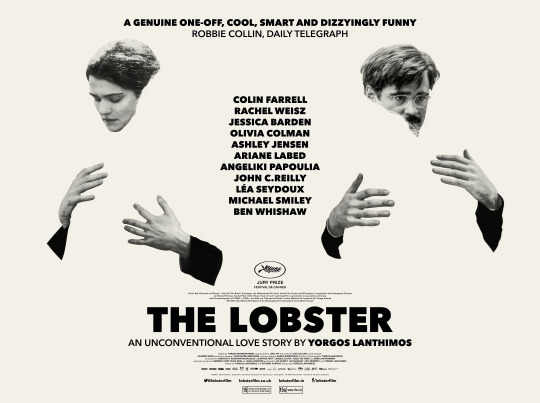
The Lobster is a satire on the systematic and emotionless approach many people take to finding love. In an alternate reality where being single is outlawed, one would think that loneliness would be hard to come by. However, the characters at the forefront of our story inhabit a constant state of cold and stark isolation, even when they do find love, whether it be organically or manufactured. In this world however, love in all it’s forms is quantified, measured and heavily scrutinized, like some sort of product on an assembly line. The tone this film presents is one of prevailing melancholia which aches with solitude. The lines are delivered with zero inflection or emotion, yet still demonstrate the eccentric sense of dry humor at the core of the story. On concept alone this film is one of the best offerings of 2016, but is bumped to the next level with strong and nuanced performances and clever writing.
- Karrie Lyles
The Top 10 Movies of 2016
Alright, well, here we go.
No more putting it off, here is our top 10 movies of 2016:
10. Zootopia
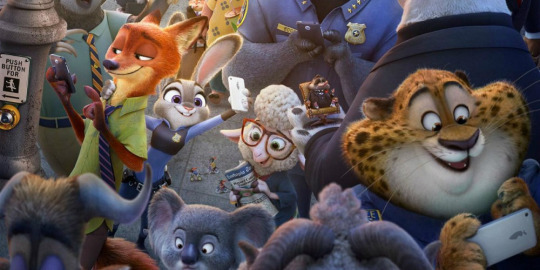
Zootopia is an original animated film put together by the folks over at Walt Disney Animation Studios that refuses to talk down to its primary audience, children. It’s a film that fits the bill of a colorful and lively Disney romp for children, but it also sands alone as a smart, technically impressive, and fantastical film. In a year with a lot of animated films of varying quality, Zootopia is not only one of the best animated films of 2016, but one that will probably stand the test of time.
- Jurge Cruz-Alvarez
9. The Jungle Book
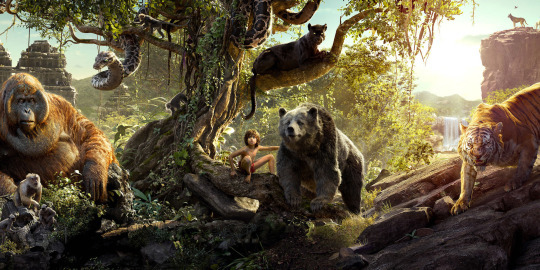
It’s easy to say that the film industry is over-saturated with remakes and sequels that are uninspired and unnecessary. However, when it comes to Jon Favreau’s journey into the Disney classic The Jungle Book, there’s nothing tired about it. The story has newfound power and mastery leaving behind any conceptions that it’s nothing more than a movie for kids. Propelled ahead of other talking animal movies by the amazing performances of the leading cast and the beautiful atmosphere created in the landscape of the film, The Jungle Book is a stellar experience.
- Karrie Lyles
8. Arrival
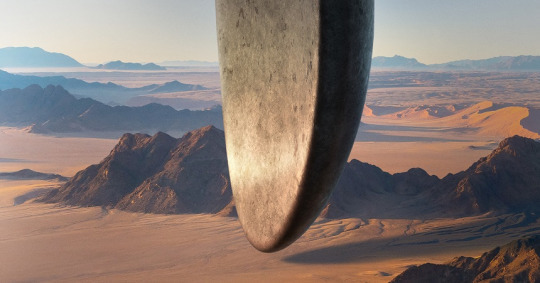
Arrival is fresh. Of the films in its genre that have released in the past five years, Arrival is one of the best, if not the best. It tells its story in an eerie, mysterious, and well, alien way. Its style is haunting and its performance from its lead Amy Adams is strong. While some story threads are connected in a questionable fashion, it’s one that works well and leaves the audience with nuanced questions.
- Jurge Cruz-Alvarez
7. Southbound
youtube
Southbound has proven itself not only as a unique and unforgettable horror romp, but also as a test of endurance. An amalgamation of brutality, unease, and terror, this anthology horror film enters the list as an exciting and stylized plunge into purgatory in the form of the open road. Five stories are laced loosely but effectively together by the desolate stretch of highway, the radio host encouraging the driver, and the omnipresent sense of dread. The many facets of this film, from the dissonant and purposeful soundtrack to the haunting design of the creatures, establish an isolated world that seems to have an agenda all its own. Would it be too cheesy to say buckle up?
- Karrie Lyles
6. The Neon Demon
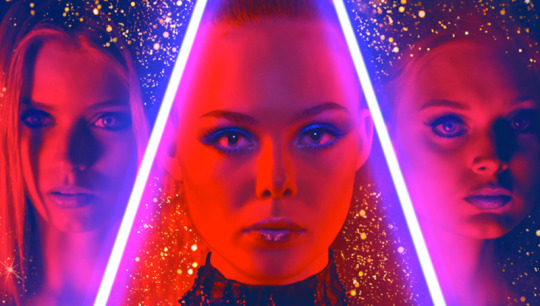
A film as divisive as it is stylish. The Neon Demon creates a beautiful fantasy world that slowly morphs into a vaporwave nightmare. Some will fall in love with it, others will despise it, and many will find themselves fluctuating in between. It’s unique nature is worth the watch to see which end of the spectrum you fall on.
- Ryan Lance
5. Rouge One: A Star Wars Story
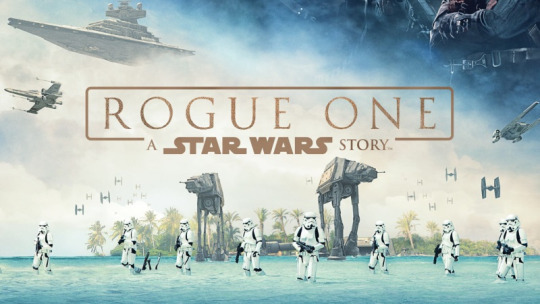
As outrageous as it might sound, Rogue One wound up being a grounded film; certainly when compared to other films in the franchise. Its focus on a group of nobodies who are truly presented as a group of nobodies, and the clever ways it ties itself to A New Hope gives the conflict of the original three Star Wars films a new sense of humanity and weight. While it certainly has some fat around the edges, that does not stop Rogue One from being a strong action sci-fi film.
As someone who thinks A New Hope stands alone and is the best thing to have the name Star Wars, I was happy to see this film successfully enrich such a classic.
- Jurge Cruz
4. Green Room
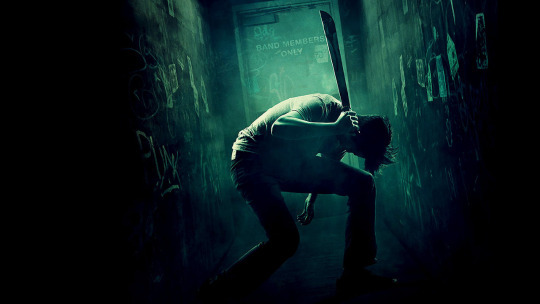
Green Room’s relatively simple premise sets up a brutal thriller that keeps you invested all the way through. It’s a violent and gritty ride you’ll be watching while curled into a ball on your couch (At least I was). With some outstanding performances from Patrick Stewart and the late Anton Yelchin, Green Room is a must watch for all fans of the thriller genre.
- Ryan Lance
3. Swiss Army Man
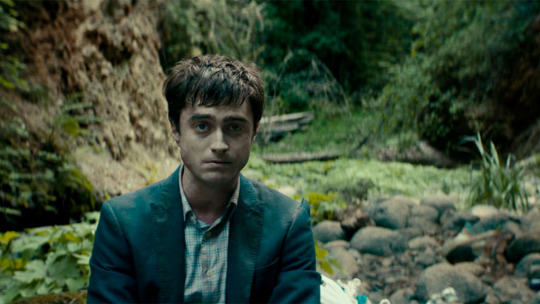
Swiss Army Man is one of those films where the people who talk about it always seem to be compelled to throw in a “where do I begin?” or a “you have to see it to believe it” or something of similar awestruck yet confused wonder. An unflinching look at what constitutes a full life. This film breaks down what fuels and perpetuates societal shame and illustrates what an imposition decency can be.The devastating reality of a suicidal man having to convince someone how beautiful and fulfilling it is to be alive. Born from what the directors, Daniels, hate most in film; bodily humor, acapella music, and musicals, comes a heartfelt and wonderfully crafted film that you just can’t get out of your head.
- Karrie Lyles
2. 10 Cloverfield Lane
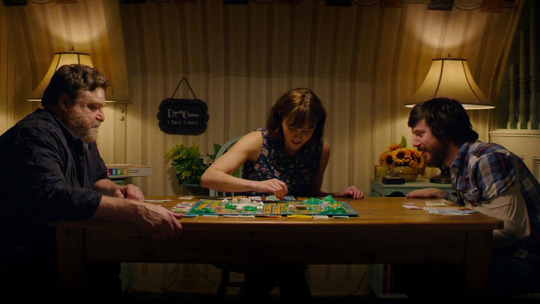
10 Cloverfield Lane leaves you feeling as claustrophobic as its characters, with tension rising the longer you are trapped in there. This type of psychological thriller isn’t one you come across often, as it plays with your fears and anxiety in thoughtful ways similar films fail at. Add in some fantastic performances by the small cast of Mary Elizabeth Winstead, John Goodman, and John Gallagher Jr., and 10 Cloverfield Lane is a film I’d recommend to anyone.
- Ryan Lance
And finally…
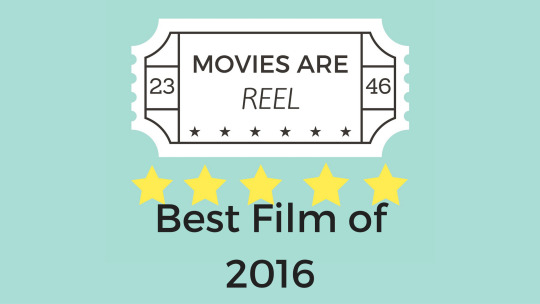
1. The Witch
youtube
The Witch was one of our most anticipated films of this year, and there was certainly some skepticism if it could live up to the excitement we ourselves built up for it. It was clear that it was a horror film of a different species, one slower and very deliberate.
I personally was worried that it would turn out as a plodding film with a lot of ambition.
But The Witch delivers. It’s an unsettling film with unforgettable imagery and a fascinating dissection of a family and their inner politics. Its lead character, played Anya Taylor-Joy, is probably one of the most complicated and multifaceted characters in the history of horror. The growth she goes through is one that challenges critical thought while still being gripping.
Its ending is also pretty darn fun.
It’s because of this that it is our movie of the year.
- Jurge Cruz
Personal Lists
Well, that was a lot of work. Now that the weight is off our backs, let’s get a bit more casual.
Here are our top three films of 2016,
Karrie’s Top Three Movies of 2016:
1. Swiss Army Man (Karrie already talked about it on the list)
2. Southbound (Karrie already talked about it on the list)
3. Gods of Egypt
Some people just want to watch the flat Earth burn, or be attacked by a giant space snake. I get it, OK? This movie is hot garbage BUT, it’s the best and hottest garbage in all the land. Somewhere along the line of making fun of this movie constantly, I found myself genuinely liking it. The chorus of characters that are shallow and unlikable, the metallic humanoid CGI battle bots, the fact that post Pirates of the Caribbean Geoffrey Rush is condemned to be a disgruntled sea captain forever, it’s a bottomless pit of things that you should never do in a film, but THIS film has the gumption to not only do all of them, but to sequel bait at the end. This movie is pure gold just like the blood that runs through the veins of the slightly above average sized gods who walk among us. Even if it’s for all the wrong reasons Gods of Egypt is one of my favorite films of 2016.
- Karrie Lyles
Jurge’s Top Three Movies of 2016:
1. The Witch (Jurge already talked about it on the list)
2. Green Room
From my review
“Green Room is a compact and human horror thriller. Its tension is so high because it respects its young cast and makes them human. The violence it is so good at displaying hits hard and adds to that tension. For a movie about a bunch of kids getting picked off one by one, it is really, really smart. Apart from two notable exceptions, its characters aren’t all that likable or memorable, but you can still buy into them. They aren’t obnoxious. They are people. That’s why it’s a cut above a lot of films in the genre, and why it’s one of 2016’s best films.”
- Jurge Cruz-Alvarez
3. Rogue One: A Star Wars Story (Jurge already talked about it on the list)
So, that’s 2016. If you have read this or have given any of our content any attention, thank you. It means a lot. We’re excited to jump into 2017 and hope to keep the podcast going strong.
Here’s hoping January is a strong start.
Ryan’s Top Three Movies of 2016:
1. 10 Cloverfield Lane (Ryan already talked about it on the list)
2. The Witch
3. The Neon Demon
----------------------------------------------------------------------------------------------------
Jurge:
twitter: https://twitter.com/suparherojar26
blog: http://jcruzalvarez.tumblr.com/
Ryan
twitter: https://twitter.com/fryanpans
blog: http://freezevolt.tumblr.com/
Karrie
twitter: https://twitter.com/kar_elyles
blog: sylvia-socioplath.tumblr.com
#best movies of 2016#best of 2016#top 10 movies of 2016#green rrom#the witch#the neon demon#rogue one#zootopia#the lobster#the inviation#arrival#soutbound#swiss army man#movie talk#movie discussion#movies#film#podcast#feature
18 notes
·
View notes
Text
Why Yasumasa Morimura Places Himself in Art History’s Most Famous Scenes

Yasumasa Morimura, Une moderne Olympia, 2018. © Yasumasa Morimura. Courtesy of the artist and Luhring Augustine, New York.
Yasumasa Morimura is a fan of role-play—in fact, one could say it’s his primary medium. Since the mid-1980s, the Japanese conceptual photographer has transformed his own body to resemble creative geniuses, megastars, and revolutionaries as wide-ranging as Vincent van Gogh, Marilyn Monroe, and Che Guevara. He’s also impersonated the subjects of art history’s famous paintings: He plays the reclining prostitute in Édouard Manet’s Olympia (1863), as well as the smiling female victor and the gruesomely severed head in Lucas Cranach the Elder’s Judith with the Head of Holofernes (ca. 1530).
While Morimura has described his practice as “wearable painting” or “wearing Western art history,” it’s not a superficial act: He fuses the identity and concerns of his subjects with his own. “To put it simply, I feel Dürer in myself and myself in Dürer,” he explained, in a recent interview with the Japan Society, of his 2016 recreation of a self-portrait by Albrecht Dürer, painted in 1500.
In the process, Morimura not only probes his own identity as an artist and Japanese man, but also broader themes of cultural, political, and national selfhood: in particular, the increasingly blurred lines between East and West. The scope of his 30-year investigation is currently on full, mesmerizing view at the Japan Society in “Ego Obscura,” the 67-year-old, Osaka-based artist’s first solo show at a New York institution.

Yasumasa Morimura, Self-Portraits through Art History (Van Gogh / Blue), 2016. © Yasumasa Morimura. Courtesy of the artist and Luhring Augustine, New York.

Yasumasa Morimura, Self-Portraits through Art History (What Leonardo’s Face Says), 2016. © Yasumasa Morimura. Courtesy of the artist and Luhring Augustine, New York.
Morimura made his first art-historical self portrait in 1985, when he was in his mid-thirties. His chosen subject was Van Gogh, an artist who, in retrospect, represented numerous themes Morimura would reflect upon over the course of his career.
At the time, Western art was en vogue in Japan. Morimura was born the same year World War II officially came to a close with the San Francisco Peace Treaty, in 1951; in the following years, Japanese citizens buried their own cultural traditions—considered “a trigger of war,” according to Morimura—in favor of their Western counterparts. By the 1980s, Van Gogh, in particular, was idolized by the Japanese as a creative lodestar and an investment opportunity. (In 1987, a Japanese company snapped up the Dutch artist’s Sunflowers, 1888, at auction for a whopping $39.8 million.)
For his part, Morimura was spellbound by the Post-Impressionist’s 1889 Self-Portrait with Bandaged Ear and Pipe, which shows Van Gogh in clear anguish, having recently chopped off his own ear in a fit of artistic insecurity and depression. Morimura’s recreation is almost identical, achieved through expertly applied makeup and staging. Set against a bright-red backdrop, his face glows with the same sickly pinkish-white hue as the Dutch artist, and he, too, poses with a burning pipe in layers of bandages and thick, fuzzy clothing. Indeed, Morimura looks like a painting—expect for his eyes, which contain a red-blooded, mischievous glimmer that Van Gogh’s self-portrait did not.

Yasumasa Morimura, Doublonnage (Marcel), 1988. © Yasumasa Morimura. Courtesy of the artist and Luhring Augustine, New York.

Yasumasa Morimura, Self-Portraits through Art History (Van Eyck in a Red Turban), 2016. © Yasumasa Morimura. Courtesy of the artist and Luhring Augustine, New York.
The experience of looking at the two images side by side is initially pure fun, like a kid’s game of “spot the differences.” A quote from Morimura comes to mind: “Art is basically entertainment. Even Michelangelo and Leonardo da Vinci were entertainers,” he noted. “In that way, I am an entertainer and want to make art that is fun.” But a longer look offers much more than a visual lark. In fact, the differences between the two canvases aren’t so much funny or charming as jarring: Morimura’s lively eyes look as if they’re imprisoned behind a stifling mask of Van Gogh’s face, obscuring Morimura’s Japanese identity.
For Morimura, this dissonance isn’t only intentional, but essential to his photographs, which he’s described as a “picture of things gone amiss.” He explained further in a 1990 issue of ARTnews: “East meets West in my work, but I haven’t made an attempt to merge the two worlds. They exist in opposition.”
Indeed, Morimura’s restagings are full of spellbinding and downright loaded juxtapositions. Take his 1988 recreation of Manet’s celebrated painting The Fifer (1866), which, like Olympia, highlights the Western world’s exoticization, infantilization, and oppression of Eastern cultures. As Norman Bryson pointed out in his 1995 essay “Morimura: 3 Readings,” in a triptych of three photos responding to The Fifer, Morimura replaces “body of the colonizer with the bodies of the colonized” by depicting the young French soldier as either Asian or black; troublesomely, his characters have their pants around their ankles in two of the three images.

Yasumasa Morimura, Still from Egó Obscura, 2018. © Yasumasa Morimura. Courtesy of Yasumasa Morimura.
In Portrait (Futago) (1988), his restaging of Olympia, Morimura plays the role of both the young, supine prostitute and the black maid who attends to her. Here, he addresses Western stereotypes of Eastern art and culture by using his Asian male body to play the role of Manet’s female subjects, while also replacing the decor with objects related to Japanese culture and commerce. He lies on a kimono instead of European-made fabrics, and swaps Manet’s cat with a maneki-neko, a traditional Japanese cat figure that usually sits atop shop counters, promising luck and financial success. As Bryson suggested, these inclusions could be read as an allusion to the Western “geisha” stereotype: “the figuration of Japan-as-woman,” or a country easily preyed upon and infantilized, like the young prostitute in Manet’s canvas. In other words, Morimura replaces the predatory “male gaze” with the Western gaze.
But like all of Morimura’s photographs, these works aren’t purely critical; they reference both a resistance to and reverence of Western culture. He’s described his oeuvre as a “psychological portrait of myself, having been strongly influenced by Western culture, despite having been born and raised as a Japanese man.” And when Japan’s traditions do seem subsumed or oppressively masked by Western culture in his work, he doesn’t make clear who—if anyone��is at fault.
Indeed, the artist prides himself in resisting essentialism and insists that he doesn’t take sides. After finishing a 2010 series of self-portraits based on photos of famed revolutionaries from Guevara to Lenin, he remembers being asked how he felt about their politics. “I don’t really have a good answer except to say that I’m on both sides,” he responded. “It’s not as simple as picking sides.”

Yasumasa Morimura, Self-Portraits through Art History (Le Brun on the Witness Stand), 2016. © Yasumasa Morimura. Courtesy of the artist and Luhring Augustine, New York.

Yasumasa Morimura, Self-Portraits through Art History (Dürer’s Hand is Another Face), 2016. © Yasumasa Morimura Courtesy of the artist and Luhring Augustine, New York.
He likes to describe the process of filling his work with dualities as “wavering”—a luxury somewhat unique to artists. “Maybe there are times when you have to pick sides, but even as you’re going through that process, you’re wavering between the two extremes, and that feels more real to me,” he said in a 2010 interview. “I believe art is what is able to express that reality.”
It’s not easy to pin a single meaning to Morimura’s self-portraits. But if his work has any overarching message, it’s that identity is multivalent, constantly shifting, and the sum of many forces: cultural, political, and personal.
Nowhere is this more clear than in Morimura’s 2016 film Ego Symposium, in which he brings together 12 of the artists he’s impersonated over the course of his career in a single work. Here, however, he recreates their most iconic self-portraits; we see Andy Warhol with his silver wig and sunglasses, Frida Kahlo with her unibrow and hairpiece, and Diego Velázquez with his large moustache, among others. In the opening scene, they all sit together at a single dinner table, à la Leonardo’s Last Supper (1495–98). Of course, they all look eerily similar; underneath the elaborate makeup is Morimura himself—an individual made of many influences.
from Artsy News
1 note
·
View note